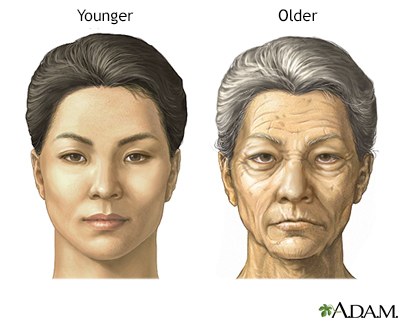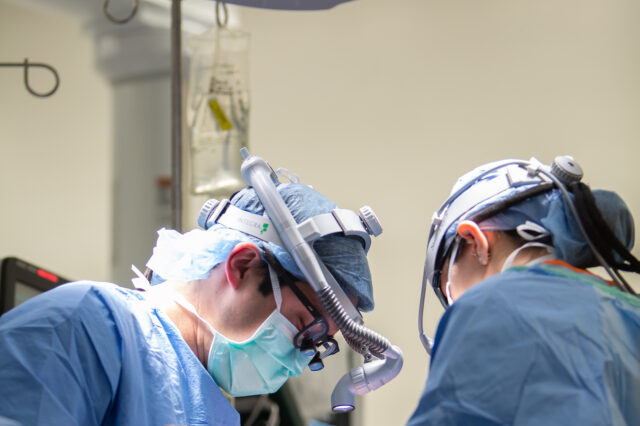Definition
Wrinkles are creases in the skin. The medical term for wrinkles is rhytids.
Considerations
Most wrinkles come from aging changes in skin. Aging of the skin, hair and nails is a natural process.
Frequent exposure to sunlight results in early skin wrinkles and dark areas (liver spots). It also increases the chances of getting skin cancer. Exposure to cigarette smoke can also make the skin wrinkle sooner.
Causes
Common causes of wrinkles include:
- Genetic factors (family history)
- Normal aging changes in the skin
- Smoking
- Sun exposure
Home Care
Stay out of the sun as much as possible to limit skin wrinkles. Wear hats and clothing that protect your skin and use sunscreen daily. Avoid smoking and secondhand smoke.
When to Contact a Medical Professional
Wrinkles are not usually a cause for concern unless they occur at an early age. Talk to your health care provider if you think that your skin is getting wrinkled faster than normal for someone your age or if you would like to consider cosmetic treatments for normal wrinkles from aging. A skin specialist (dermatologist) or a plastic surgeon can discuss non-surgical or surgical treatment options with you.
What to Expect at Your Office Visit
Your provider will ask questions, such as:
- When did you first notice that your skin seemed more wrinkled than normal?
- Has it changed in any way?
- Has a skin spot become painful or does it bleed?
- What other symptoms are you having?
Your provider will examine your skin. You may need a skin lesion biopsy if you have any abnormal growths or skin changes.
These are some treatments for wrinkles:
- Tretinoin (Retin-A) or creams containing alpha-hydroxy acids (such as glycolic acid)
- Chemical peels, laser resurfacing, or dermabrasion work well for early wrinkles
- Botulinum toxin (Botox) may be used to correct some of the wrinkles that are caused by overactive facial muscles
- Medicines injected under the skin can fill in wrinkles or stimulate collagen production
- Plastic surgery for age-related wrinkles (for example, a facelift)
References
Baumann L, Weisberg E. Skincare and nonsurgical skin rejuvenation. In: Peter RJ, Neligan PC, eds. Plastic Surgery, Volume 2: Aesthetic Surgery. 4th ed. Philadelphia, PA: Elsevier; 2018:chap 4.
Patterson JW. Disorders of elastic tissue. In: Patterson JW, ed. Weedon's Skin Pathology. 5th ed. Philadelphia, PA: Elsevier Limited; 2021:chap 13.




